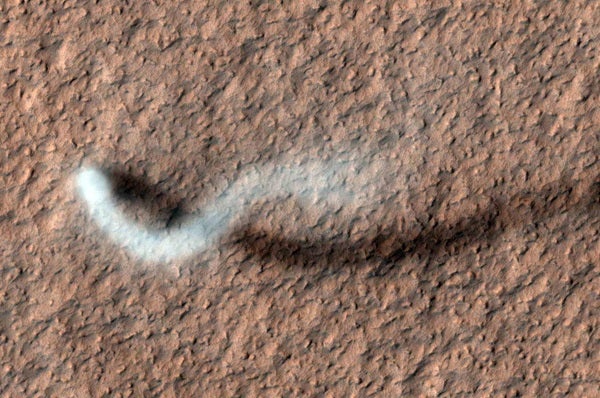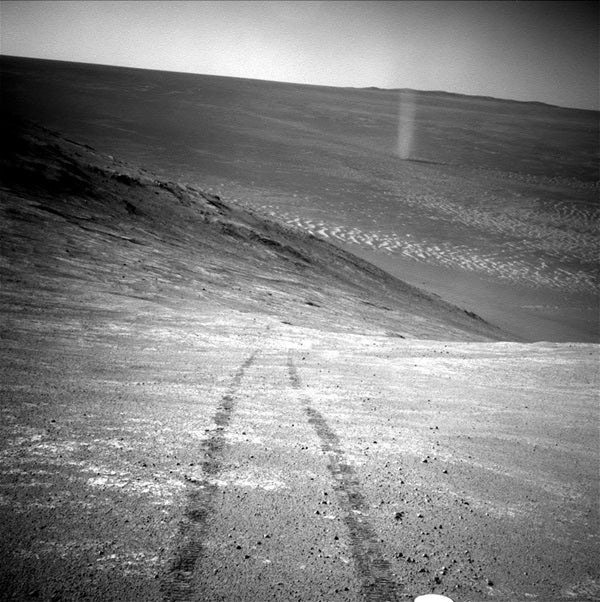The work, carried out by Jan Raack of the Open University and a team of international collaborators, was presented Monday at the European Planetary Science Congress 2017 in Riga, Latvia. While conditions on most planets can’t be easily replicated or studied on Earth, dust devils are one exception; Raack and his team planted themselves in the path of these whirlwinds to sample dust particles at different heights to better understand how they transport dust. They learned that small dust particles lifted into the air by a dust devil can have far-reaching effects on air quality and weather, illustrating the role dust devils play in planetary climates, whether on Earth or Mars.
In fact, dust devils likely influence martian weather and conditions to an even greater degree, given that the majority of the planet’s surface is arid and contains a higher dust content than Earth. Dust devils are believed responsible for about half of the dust present in the martian atmosphere; they can also grow several times larger than Earth’s dust devils. At such sizes and intensities, they could post a concern for rovers, landers, and eventually humans on the surface of the planet.
NASA’s Spirit rover tracked this martian dust devil for nearly 10 minutes in 2005; you can spot additional, smaller dust devils in the background as it passes.
NASA/JPL
To complete their work, members of the team let dust devils sweep over them while holding a pipe coated with double-sided tape. “The method for sampling is simple — although not actually that pleasant to carry out as it involves getting sandblasted,” Raack said in a press release. Dust grains from the dust devil would stick to the pipe, and the team would transfer those grains to glass slides for study using a microscope, making sure to note the height above the ground at which the dust was collected.
They found that the largest dust grains stayed near the bottom of the dust devils, while the smallest rose to the top. From there, 60-70 percent of the smallest dust grains (with diameters less than 0.001 inch [0.03 millimeter]) remained suspended in the air, even after the dust devil had passed. Winds could then transport those particles over vast distances, affecting the climate elsewhere.











